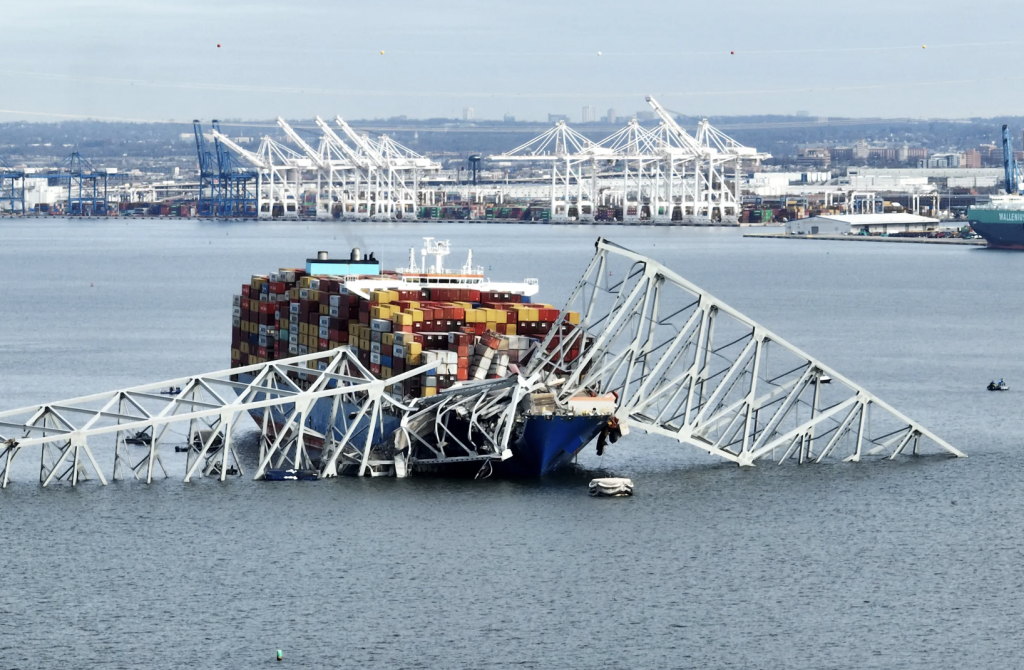Just before half past 1 in the morning, the MV Dali, a massive container ship, was peacefully departing from Baltimore’s port when a sudden catastrophe occurred. Initially, the ship’s lights went out momentarily, flickering back on as it unexpectedly veered towards one of the towering supports of the Francis Scott Key truss bridge—a significant steel and concrete structure spanning the Patapsco River.
The Dali’s lights failed a second time before colliding with the support, causing substantial sections of the bridge’s main truss to collapse into the river within a span of about 20 seconds. The incident has plunged a major US port into chaos, with several workers missing from the collapsed bridge prompting ongoing rescue efforts. President Biden termed the event a tragic accident.
David Knight, an expert on bridges, commented that the collapse, though shocking, was not entirely surprising given the immense force exerted by the ship. He explained that while steel structures appear robust, they can fold under sufficient pressure, especially in unjointed bridges like the Francis Scott Key, known for its immense central truss spanning 366 meters.
Despite past inspections indicating satisfactory conditions, the bridge succumbed to the force of the collision. The ship, a 2015 Singapore-flagged vessel, experienced propulsion loss before the crash, necessitating a desperate mayday call to authorities. While all crew members were safe, the incident has halted ship traffic and cut off a major roadway, severely impacting port operations.
Analysts underscored the challenge ships face in making rapid adjustments, highlighting the vessel’s inability to avert disaster once it veered off course. Investigations, including data from onboard recorders, are expected to shed light on the exact sequence of events leading to the collision, amidst ongoing efforts to clear the river and resume port activities.

COMMENTS